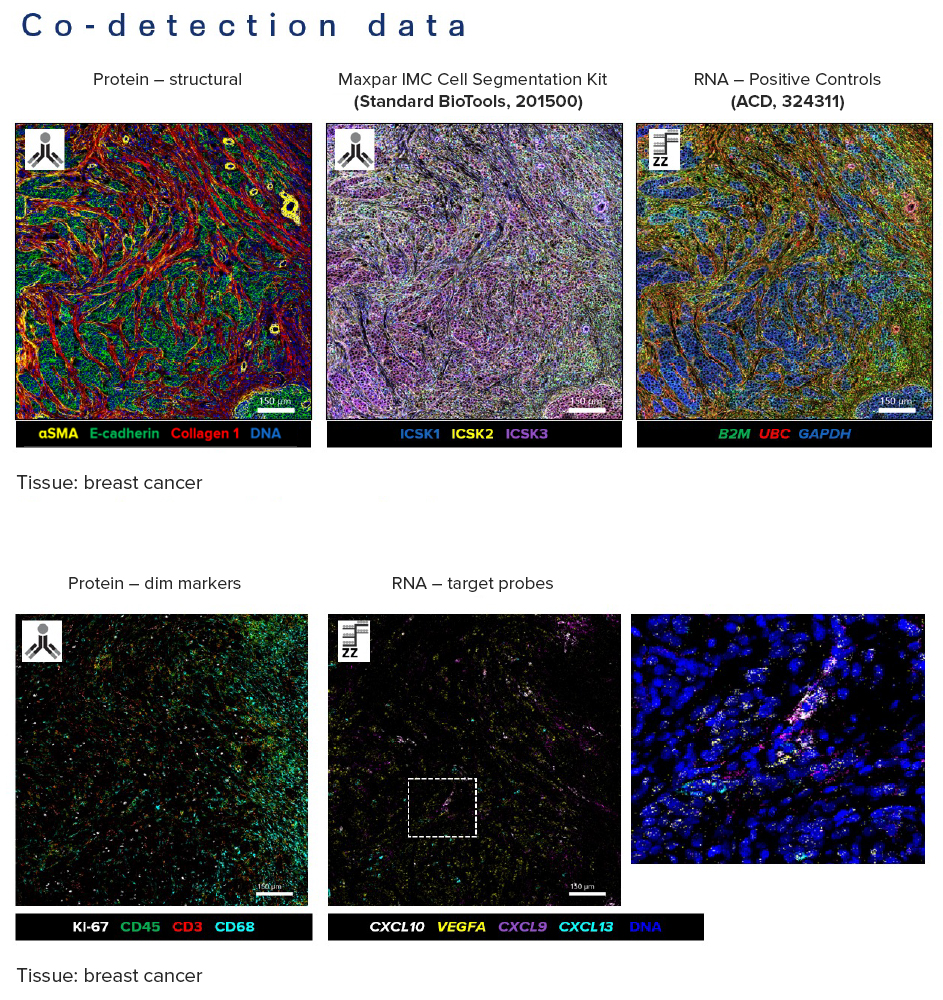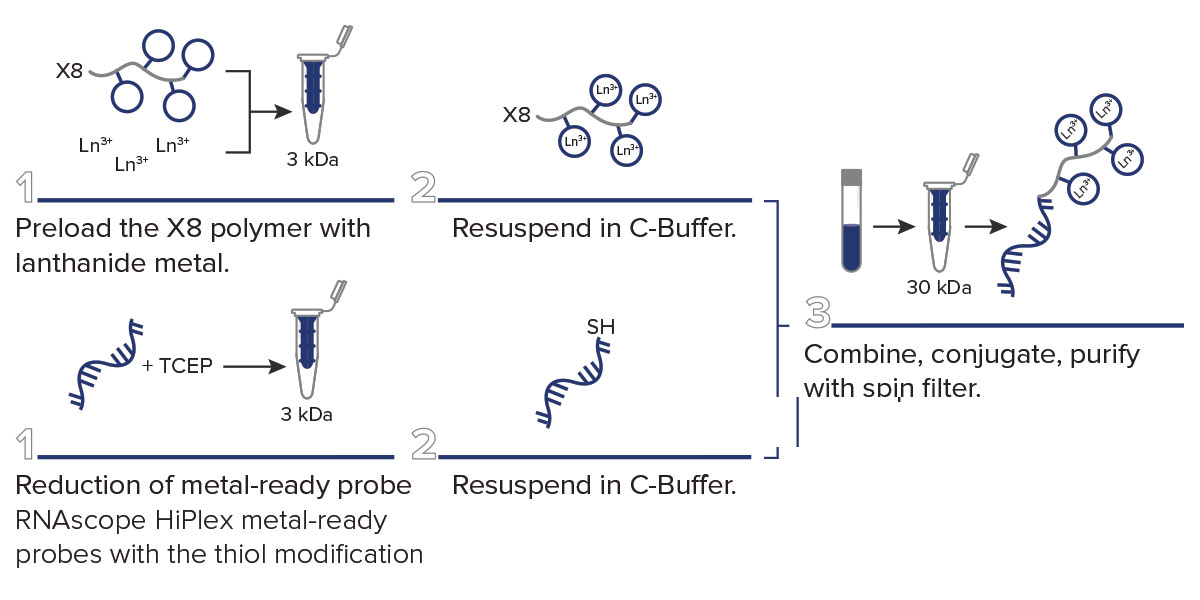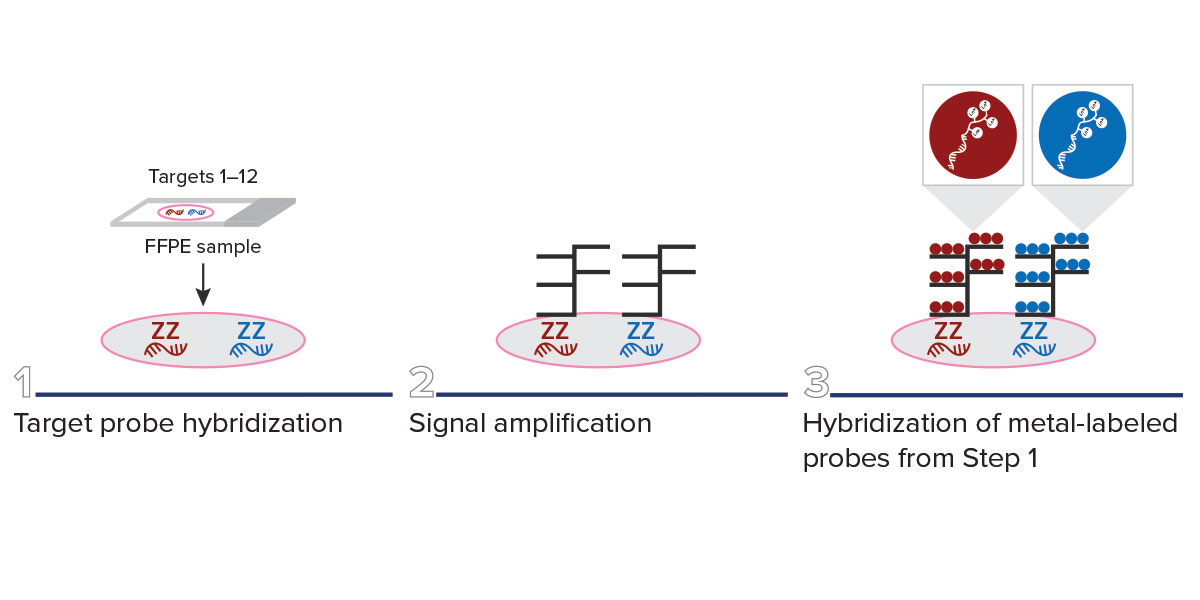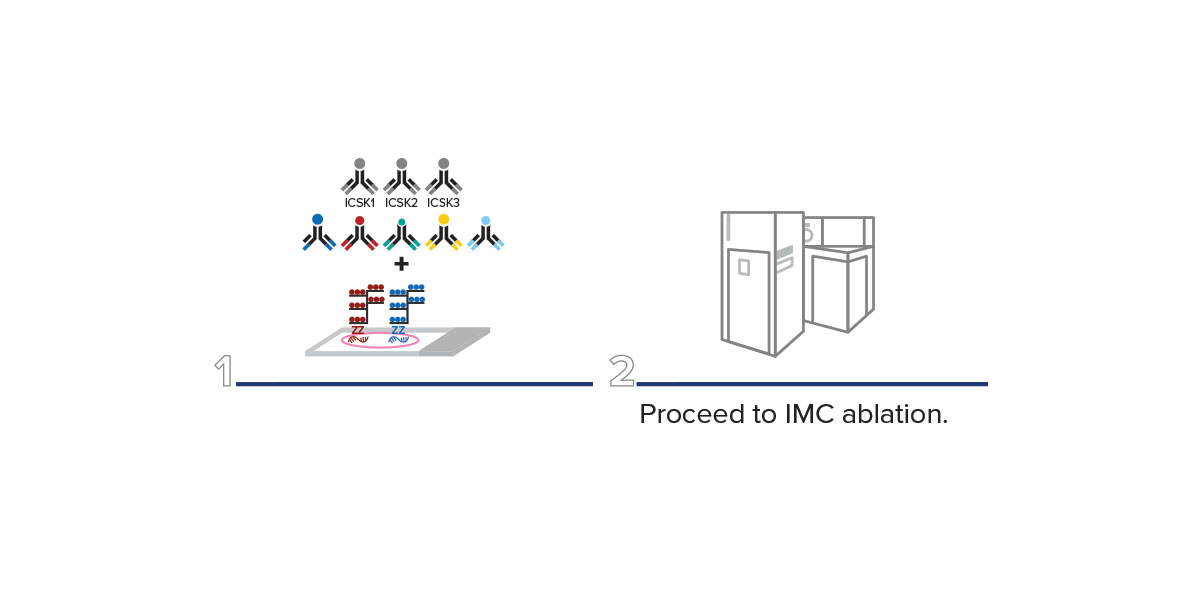Co-Detection of RNA and Protein

Visualize key RNA and protein markers in the same samples.
Standard BioTools™ and Advanced Cell Diagnostics have created a new cutting-edge workflow that combines RNAscope™ technology with IMC™ to visualize key RNA and protein markers in the same samples.
Imaging Mass Cytometry™ is a proven tool for the study of complex cellular interactions in the tumor microenvironment (TME), using CyTOF® technology for simultaneous assessment of 40-plus protein markers at subcellular resolution without spectral overlap or background autofluorescence. However, some challenges remain. There are protein targets that are challenging to include in a panel as they have few or no available commercial antibodies. And although cellular identity can be deciphered through detection of protein targets, knowledge of the cell’s transcriptome improves understanding of cellular function and activation state.

 Using positive control RNA targets, you can confirm RNA quality in serial sections of tissue samples (breast cancer shown here) in order to confidently move forward with performing co-detection. The detected targets shown have few or no available commercial antibodies; utilizing co-detection in IMC allows visualization of cells that express mRNA for these protein targets of interest.
Using positive control RNA targets, you can confirm RNA quality in serial sections of tissue samples (breast cancer shown here) in order to confidently move forward with performing co-detection. The detected targets shown have few or no available commercial antibodies; utilizing co-detection in IMC allows visualization of cells that express mRNA for these protein targets of interest.
Preparing for RNA and protein co-detection using Imaging Mass Cytometry
This workflow allows for the co-detection of RNA and protein markers in the same formalin-fixed, paraffin-embedded samples, enabling researchers to gain deeper insights into the complex cellular interactions within the TME.
ACD Positive Control Probes can be used to ensure the RNA quality of tissue samples. FFPE serial sections should always be freshly prepared; analyze the quality on one serial section with the RNAscope HiPlex 12 Positive Control Probes – Hs and then explore target probes on other serial sections.
By leveraging the subcellular resolution and multiplexing capabilities of IMC with the high sensitivity and specificity of RNAscope, this integrated approach offers new possibilities for studying previously inaccessible targets and activation states of cells, driving further biological insights within IMC experiments.
Get started: a three-step workflow
For more detailed information on this workflow, read the technical note Co-Detection of RNA and Protein to Explore Tumor-Immune Interactions Utilizing RNAscope With Imaging Mass Cytometry, which provides an overview of the procedure to detect both RNA and protein targets in an FFPE sample using IMC. The tech note:
- describes the conjugation of metal-ready detection oligonucleotides with lanthanide metal tags (Step 1);
- details how to adopt the RNAscope HiPlex v2 workflow utilizing the metal-conjugated oligonucleotides (Step 2);
- provides guidance on the overnight staining of protein targets with IMC antibodies (Step 3).
Graphical schematic of the three-step procedure to acquire RNA and protein co-detection data with IMC
Step 1: Labeling of Detection Oligonucleotides

Step 2: Modified RNAscope HiPlex Flex Assay v2

Step 3: IMC Antibody Staining Overnight

tips and resources
Here are five key tips for new users.
- Read our technical note, which outlines all reagents and equipment required. Be sure to follow the step-by-step procedure.
- Purchase metal-ready probes and target/control probes and the RNAscope HiPlex Flex Reagent Kit for IMC Users from ACD.
- Design your panel. Decide which metals to assign to your RNA targets and which metals to assign to your protein targets.
- Purchase the appropriate Maxpar® X8 Antibody Labeling Kit from Standard BioTools and conjugate your metal-ready probes.
- Begin your experiments. Start by using serial tissue sections and running your controls: positive control probes, negative control probes, protein-only control.
Other Resources:
- Flyer: RNA and protein co-detection with Imaging Mass Cytometry
- Article: RNA and protein co-detection with Imaging Mass Cytometry and RNAscope assay
- Press Release: Bio-Techne commercializes RNAscope spatial biology workflow for the Standard BioTools Hyperion™ Imaging System
- Support: For ACD related services and support information, visit the website or send an email.
RELATED BLOG POSTS
-
Exploring a new frontier in immuno-oncology
Cutting-edge workflow combines RNAscope technology and the multiplexing capability of IMC to visualize key RNA and protein markers
-
The significance of the messenger
How we can tackle the complexity of cell signaling and translate this knowledge to what matters
Customer Stories
Learn more about how our customers are leveraging Standard BioTools technology.
Daniel Schulz, PhD

Discovering a chemokine’s purpose in fighting tumors using RNA and protein co-detection
For Research Use Only. Not for use in diagnostic procedures. Patent and License Information: www.standardbio.com/legal/notices. Trademarks: www.standardbio.com/legal/trademarks. Any other trademarks are the sole property of their respective owners. ©2025 Standard BioTools Inc. All rights reserved.
